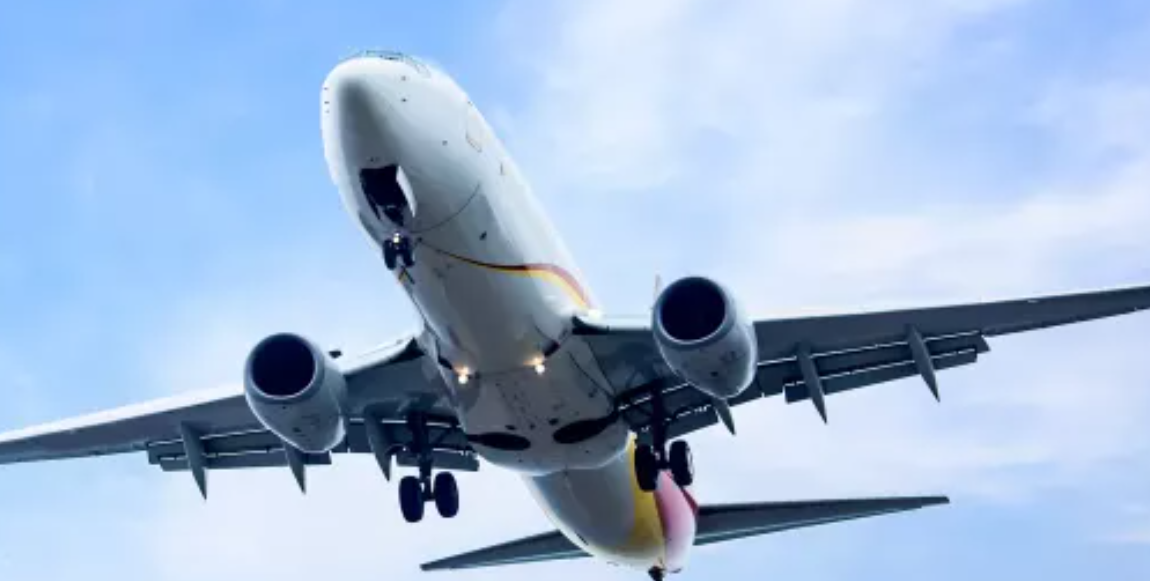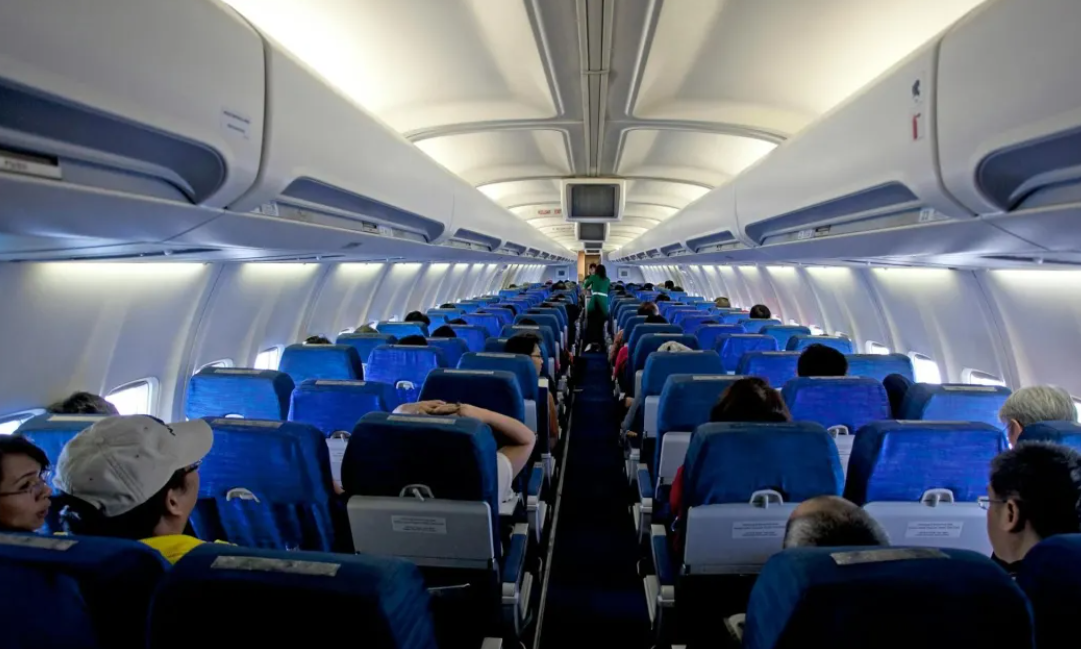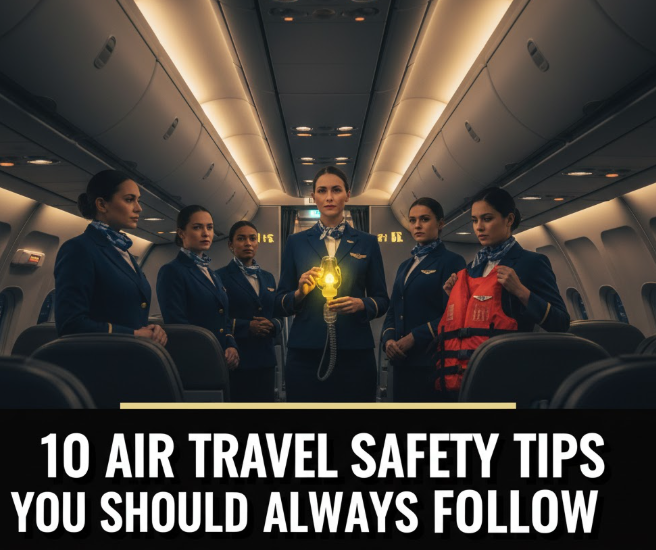Taking your first flight can be an exhilarating and nerve-wracking experience. You may wonder what the airport is like, how security screening works or what it’s like to be on a plane when it takes off. Not to worry — millions of people fly every single day, and once you know what’s in store, you’ll see that flying isn’t so complicated after all. This guide leads you through everything from booking your ticket to touching down, so that when you board that plane, it’s all about confidence and the thrill of adventure.
Before You Book: Prepare for Your Trip
Picking the Right Flight
You search for flights online and get hit with a ton of options that vary in price and time. Here’s what matters most:
Nonstop vs. connecting flights: A direct flight makes a stop, but you do not change planes. A connecting flight means you will descend at another airport and continue your journey on a different plane. Flights with connections are cheaper, but more of a pain.
Departure times: Morning flights tend to be the most on-time because delays have not accumulated over the course of the day. Evening flights allow you extra time to make your way to the airport, but could face higher delays.
Airline selection: Budget airlines can provide less expensive tickets but typically tack on additional charges for checked bags, seat selection and snacks. With a traditional airline, these are generally included in the price of your ticket.
Important Documents You’ll Need
Before booking anything see to that you have:
Valid ID: For domestic flights in the US, all you need is an up-to-date driver’s license or state-issued ID card. You also need a passport for international travel.
Visa requirements: Some countries require permission to enter. Do this months before your trip.
Vaccination records: Some places need you to show that you have had a vaccine and when.
Make sure you have both physical and digital copies of everything important. Keep pictures on your phone and email them to yourself as a backup.
At the Airport: Your Journey, Step by Step
How Early Should You Arrive?
| Type of Flight | Suggested Arrival Time |
|---|---|
| Domestic | 2 hours |
| International | 3 hours |
| Holiday/peak seasons | Add 30-60 minutes |
Getting there early is insurance against long lines, surprise problems or just getting lost.
Finding Your Terminal and Check-In
Airports are often split into multiple sections called terminals. The terminal from which your flight will leave is indicated on your ticket. Pay attention to signs or ask airport employees if you feel lost: they’re already accustomed to giving aid to first-time flyers.
Check-in options:
Check in online: Many airlines allow you to check in on their website or app 24 hours before your flight. You’ll receive a digital boarding pass to your phone. This is the easiest option.
Self-service kiosks: The computer screens that you see in airports where you scan your ID and print your boarding pass. They’re fast and easy to use.
Airline counter: Employees from the airline desk will assist you in checking in and provide information. This takes some time but works if you have special requests.
Dealing with Luggage
For most flights, you can bring two types of bags:
Carry-on bag: This is the small bag that stays on the plane with you. It fits in the overhead bin or under the seat in front of you. Typical maximum is around 22 x 14 x 9 inches, but check your airline’s requirements.
Checked bag: A larger suitcase that is stowed in the cargo hold of the aircraft. You leave it at the check-in counter or a bag drop spot. You will collect it from “baggage claim” upon landing. On domestic flights, most airlines charge $30-$60 per checked bag.
Packing tips for first-timers:
- Liquid, gel and aerosol items in containers of 3.4 ounces (100ml) or smaller in your carry-on bag
- Store all of these small containers in one clear quart-sized plastic bag
- Keep valuables, like electronics, medications or important documents in your carry-on
- Attach a luggage tag that includes your name and phone number to each bag
Security Screening: What Actually Happens
Yes, security checkpoints are scary the first time you do them, but they all work the same way everywhere. Here’s exactly what you’ll do:
The Security Line Process
Get in the right line: Look for signs that say “Standard” or “TSA PreCheck” (a quicker option through security for preapproved travelers). First-timers use the standard line.
Have your papers ready: Get that boarding pass and ID out. Security will visually inspect these to confirm they match.
Remove the following items: You will need to remove:
- Shoes (with exceptions for those 75+, under 12 and TSA PreCheck)
- Belt
- Jacket or heavy sweater
- Items from your pockets (phone, keys, wallet)
Prepare your bags:
- Remove laptops and large electronics, put them in individual bins
- Take out your clear bag with liquids
- Put everything in the gray bins provided
Proceed through the scanner: You will either walk through a metal detector or be asked to stand inside a body scanner with your arms raised briefly.
Gather your belongings: Retrieve your bins from the other side, put your shoes back on and repack your bags. There’s a staging area beyond security to reorganize yourself.

If Security Pulls You Aside
Security needs to do extra checks sometimes. This does not mean you did anything wrong. They might:
- Swipe down your hands or bags to test for explosives
- Pat down some areas of your clothing
- Hand-search your luggage
Remain calm, be respectful and follow their instructions. This usually only takes another five to 10 minutes.
Waiting at the Gate
Once through security you are in the “secure area” of the airport. This is where you’ll find:
Your gate: This is where you get on your plane. Gate numbers are on your boarding pass and displayed on screens all over the airport. Gates may change, so make sure to check the monitors.
Restaurants and stores: This is your last opportunity to purchase food, drinks, books or travel necessities.
Bathrooms: Go before you board — plane bathrooms are small, and sometimes there are long waits.
Charging stations: Keep your device charged for the flight.
Boarding usually begins 30 to 45 minutes before takeoff. Listen for announcements and watch the monitors in your gate area.
Boarding the Plane: To Your Seat
Boarding Groups Explained
Airlines group passengers together to avoid crowding. Your boarding group is clearly marked on your boarding pass. Groups board in this general order:
- Passengers in first and business class
- Frequent flyers with elite status
- Passengers needing extra time
- Groups 1-5 (front to back of the plane)
Wait until your group is called. Attempting to board early only leads to more crowding.
Finding Your Seat
The number-letter combination that appears on your boarding pass corresponds to your seat assignment—the row number and whether it’s an aisle or window:
- A, B, C are on one side of the aisle
- D, E, F are on the other side
- A and F are window seats
- C and D are aisle seats
- B and E are middle seats
Flight attendants are there if you cannot locate your seat.
Storing Your Bag
Store smaller items under the seat in front of you. Larger carry-ons get stowed in the overhead bin above your row. Pack the bags wheels-first and handle-out to fit more of them in. If the bins above your seat are full, use one a few rows behind — you can pick it up when you land.
In the Air: From Takeoff to Touchdown
Before Takeoff
When everyone is seated, flight attendants will:
- Show you the safety demonstration (pay attention — it’s important)
- Check that seatbelts are fastened
- Ensure seats are upright and tray tables are closed
- Confirm overhead bins are secure
The pilot will provide information about the flight time, route and weather. Then the plane begins to taxi onto the runway.
What Takeoff Feels Like
| Phase | What Happens |
|---|---|
| Taxiing | The plane rolls slowly along the runway — noisy & shaky |
| Acceleration | Engines roar and you’re pushed back into your seat |
| Takeoff | After about 30 seconds, the plane lifts off |
| Climb | Your ears may “pop” as the plane ascends. Yawn, swallow or chew gum to relieve the pressure |
| Level flight | The ride evens out and the seatbelt sign turns off after 10-15 minutes |
It is normal for engines to be very loud and to feel the aircraft vibrating during takeoff. The plane is built to withstand far more than regular flying conditions can deliver.
During the Flight
Once you reach cruising altitude:
You can get up: It is acceptable to use the lavatory, stretch your legs or retrieve something from your overhead bin. Just remain in your seat when the seatbelt sign is illuminated (it generally lights up during turbulence).
Entertainment options: Many planes have screens in the back of seats with movies, TV shows and games. Some airlines expect you to use your own device with their app downloaded in advance.
Food and drinks: On short flights (less than 2 hours), you may receive only small snacks and beverages. Longer flights typically serve meals. On most international flights it is free, though domestic airlines often charge for food.
Turbulence: The plane is likely to bump around and shake occasionally while passing through air pockets. This is normal and safe. Think of it like driving on a bumpy road — uncomfortable but not dangerous. Keep that seatbelt buckled loosely even when the sign is off.
Bathroom tips: Plane bathrooms are small but functional. There’s typically a light system that indicates whether they’re occupied (red) or available (green). Try to go during quiet periods of the flight, not during meal service or heavy turbulence.
Ear Pressure and Comfort
Pressure changes are most noticeable to your ears during takeoff and landing. Tips to help:
- Yawn frequently
- Chew gum
- Swallow often
- Do the “ear popping” maneuver: Close your mouth and pinch your nose then blow gently
Stay hydrated throughout the flight. Airplane cabins are extremely dry, so drink water even if you don’t feel thirsty.
Landing
Landing is the reverse of takeoff:
Descent starts: You may feel ear pressure again. The plane starts to descend.
Approach: Flight attendants collect garbage and ensure everything is secured.
Final descent: The downward angle of the plane becomes more evident. You will hear sounds as the wing flaps unfold and landing gear lowers.
Touchdown: There is a solid bump as the wheels strike the ground, and loud engine noise with reverse thrust.
Taxiing: The plane takes you to your gate, a journey that may last 5-15 minutes.
Remain in your seat with your seatbelt on until the airplane has come to a complete stop at the gate and the seatbelt sign is turned off.
After Landing: Getting Out and Moving On
Leaving the Plane
Be patient — it takes a while for everyone to grab their bags and exit row by row. Don’t push through or rush past other passengers. When it’s your turn in the aisle, retrieve your carry-on and head for the exit. Flight attendants stand in the doorway and say goodbye.
For Domestic Arrivals
If you traveled with just carry-on luggage, you’re done! Simply follow the signs to “Ground Transportation” or “Exit” and leave the airport.
If you checked bags:
- Follow signs to “Baggage Claim”
- Look for your flight number on the screens to find out which carousel (spinning conveyor belt) will have your bags
- Wait for your bag — it can take 15-30 minutes after landing
- Grab your bag and go
For International Arrivals
You have extra steps:
Immigration/Passport Control: Present your passport to an officer, who will stamp it and ask about your trip.
Baggage Claim: Retrieve your checked luggage.
Customs: Declare any items you’re bringing into the country (food, expensive purchases abroad, etc.). Most people simply walk through the “nothing to declare” line.
Exit: Now you can actually leave the airport.
For international flights, plan for extra time — at least an additional hour upon landing.
First Flight Checklist
✅ Book your flight 3-8 weeks in advance for best fares
✅ Check in online 24 hours prior to departure
✅ Arrive 2 hours (domestic) or 3 hours (international) before departure
✅ Pack liquids properly in your carry-on (3.4oz liquids in a clear pouch)
✅ Wear slip-on shoes for faster security screening
✅ Bring an empty water bottle to fill after you pass through security
✅ Pre-load entertainment on your device before you board
✅ Pack headphones, snacks, and charging cables
✅ Keep important documents accessible
✅ Photograph your checked luggage before checking it
Money-Saving Tips for First-Time Flyers
Airlines charge fees for lots of things that used to be included. Here’s what you need to know — and how not to spend money unnecessarily:
Bag fees: Most airlines charge $30 to $60 each way for checked bags. If you can, try to pack in a carry-on and avoid this fee.
Seat selection fees: Most airlines charge $15-$50 for picking your seat in advance. If you’re not picky about where you sit, skip this and take a free random seat assignment at check-in.
Food costs: Airport food can be expensive. Eat before you arrive or pack your own snacks (just buy drinks after going through security, because you can’t bring liquids through).
Booking timing: The lowest fares tend to be available on Tuesday afternoons and Wednesday mornings. Avoid booking on weekends, when prices are higher.
For more travel tips and flight booking assistance, visit https://calltoflights.com.
Common First-Timer Worries (And Why Not to Worry)
“What if I miss my flight?” Arrive early and you won’t. Even if you do, airlines can generally rebook you on the next available flight (though there may be a fee).
“What if I get lost in the airport?” Airport employees are everywhere to help people. Just ask anyone in a uniform or at an information desk.
“What if we hit really severe turbulence?” Pilots navigate around the worst weather. Extreme turbulence is very rare, and planes are built to withstand far more than they encounter.
“What if I get sick on the plane?” Flight attendants are trained in medical first aid. Every plane has medical supplies. If you know you suffer from motion sickness, take medication in advance and request a seat over the wing (the most stable area).
“What happens if my luggage is lost?” Fewer than 1% of bags are mishandled, and most are found within 24 hours. Never pack essentials (medications, a change of clothes, valuables) in your checked luggage.
Frequently Asked Questions

How early do I really need to be at the airport?
Arrive 2 hours before departure for domestic flights. Get there 3 hours ahead for international flights. For holidays, or if you’re not familiar with the airport, add an extra 30-60 minutes. Better to wait at your gate than to miss your flight after rushing through security.
Can I bring food through security?
Yes! Solid foods are fine. You may bring sandwiches, fruit, snacks and virtually all other solid foods. Just avoid liquids that are more than 3.4 ounces — yogurt, pudding and soup, for example. Purchase beverages once you’re through security.
What if I have a connecting flight?
For domestic connections, you normally do not re-clear security — just look for your next gate. If you’re connecting to an international flight, you may have to pass through security and customs again. Airlines generally provide 45-60 minutes between connections, though 90+ minutes is better if you’ve never done this before.
Do I need to print my boarding pass?
Not usually. Most airlines accept a digital boarding pass on your phone. But it’s good to print a backup in case your phone dies or has technical problems.
What items can I not bring on a plane?
You cannot carry weapons, sharp objects (such as knives or scissors longer than 4 inches), flammable items or liquids larger than 3.4 ounces in your carry-on luggage. These things either have to go in checked baggage or not come along. For a complete list, visit the TSA website.
Can I use my phone on the plane?
During flights, you are required to put your phone on airplane mode (when calls and cellular data are turned off). However, many planes have WiFi you can purchase to use during the flight (between $8 and $20 per flight). You can always use downloaded content, games, and apps that don’t require internet.
What if I need help during the flight?
Push the call button above your seat (small button with a person icon). A flight attendant will come to assist you. Don’t be shy — they’re there to help, whether you need water, are feeling ill or have a question.
How do I know which gate to go to?
Your gate number is on your boarding pass and on screens throughout the airport. Gates may change, so check the departure screens periodically. If you’re unsure, ask any airport worker or airline employee.
Your First Flight is Going to Be Amazing
Flying for the first time can be intimidating, but millions of passengers take off each day without a hitch — and that includes kids flying solo. Airports, security lines and airlines are all designed to make it easy for people to get from check-in to their destination. Once you’ve done it once, you’ll see it’s a straightforward and manageable process.
Just remember to arrive early, pay attention to the signs, ask for help when you need it and stay calm. Every frequent flyer was a first-timer once. Before you know it, you’ll be in your seat, looking out at the clouds below and wondering why you were ever worried.
The world is waiting for you. Have an amazing flight!






